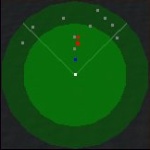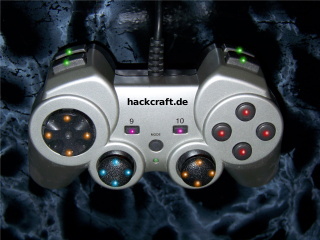Fourth Edition
0. Foreword
Vehicles and crafts are almost ubiquitous in the modern world. In the past almost every vehicle producer built their own propritary input and output systems. The pilot had to adapt his controll habits every time he/she entered another vehicle. Due to the advent of unified io-mechanisms for vehicle controll those obstacles where diminished.
Now the ongoing pilot may read only this manual and be done with it! Then the only thing the pilot has to do is plug his pearsonal io-system into the vehicle and set full thrust ahead.
1. Craft Output
This manual section covers components of the Head-Up-Display (HUD) as projected into the pilots Head-Mounted-Display (HMD*).
* Refering to whatever means of display the Pilot has, ie. it may be retinal-implants, cortex-probes, monoculars, glasses or whatever means the pilot provides - without restriction of generality. Whatever display method is used: the craft only provides the output jack. Note that the system may utilize almost any resolution via input option "-r", eg. "-r 640x400" or "-r 1024"
1.1. NAVCOM - Navigation Computer

The navcom provides the pilot with navigational means such as compass, world location in mercator format, maps, and waypoints and points of interrest (POIs).
1.2. WEPCOM - Weapon Status Computer

The wepcom provides information on the availability of installed weapons, their readiness and available ammunition. Intelligent weapons may provide information on lock-on-state.
1.3. FORCOM - Forward Looking Aggregation Computer

The forcom aggregates important operational information into a single view - it includes means for immediate targeting like the reticle and other immediate data.
1.4. TARCOM - Targeting and Ranging Computer

The tarcom may provide different modes for target accquiration, observation and threat estimation. It includes the usual Radar as a standard mode.
1.5. SYSCOM - System Status Computer

The syscom mainly displays damages of different subsystems, maintainance information and other miscellanious data.
2. Pilot Input
Besides the generic output-jack all crafts provide a generic input-jack for the unified input method. It is up to the Pilot / the pilot-suit producer to provide means of adequate input. Input devices popular with pilots include the so called "Keyboard" and "THE Pad".
Relatively cheap I/O-Devices, so called "Netbooks" or "Notebooks", possibly even "PDAs" are readily available, whereas the last option wasn't verified by the author of this manual. More professional pilots prefer so called "Wearable IO" or "Implanted IO".
Whatever the actual input device is - the input protocol is all the same. Nevertheless interpretation by the different craft my vary.
2.1. Input Example for "Keyboard" and "*books"

"A W" - Left1 and Left2 Buttons
"S E D F" - Generic 4 Buttons
"R G" - Right1 and Right2 Buttons
"J I K L" - Left Stick (+Alt = Coolie Hut)
"Left Up Down Right" - Right Stick
2.2. Input from "THE Pad"

Actually there exist several different versions from "THE Pad" having differences in Button enumeration - sadly the producers could not provide a single standard layout or the means to autodetect their layout. Nevertheless Most types either provide layout A or layout B, recogniseable by clockwise or z-wise 4 buttons. But "THE Pad" always provides two analouge Axes, 4 main buttons, a digital 4-axis-input, 2 left and 2 right buttons beside some other buttons.
2.3. Congratulations
If you read this far you are qualified enough to get started piloting your craft. You'll find your personal piloting diploma for self-printing in Appendix A. (*)
(*) Footnote: The writers of this manual are not liable for any damage inflicted.
3. Appendices
3.1. Appendix A
[ somebody has ripped this page off ]
